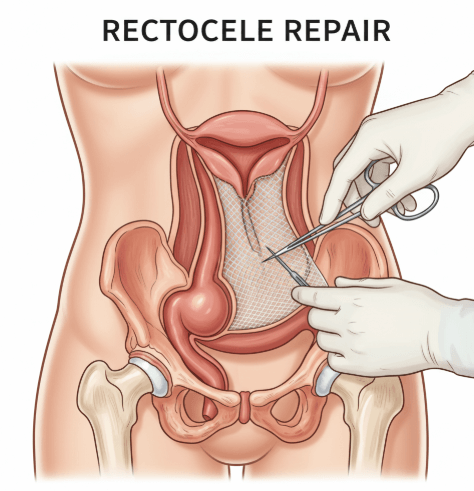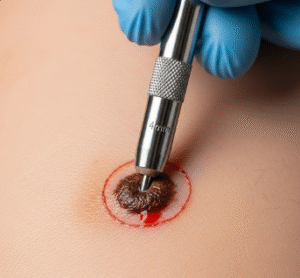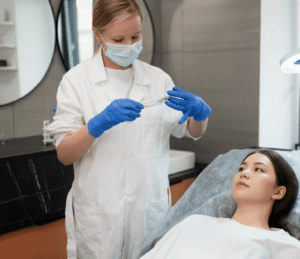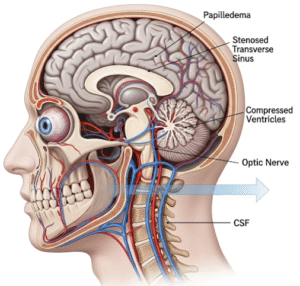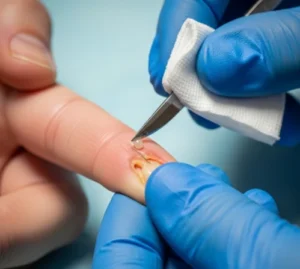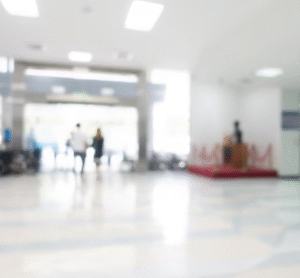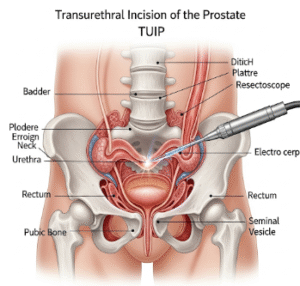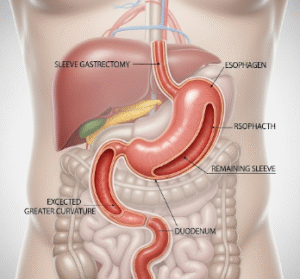What it is
A rectocele repair is a surgical or non-surgical procedure to correct a rectocele, which occurs when the rectum bulges into the vaginal wall due to weakness of the pelvic floor. This happens when the supportive tissue (rectovaginal fascia) becomes stretched or torn, often after childbirth, aging, or pelvic surgery.
In Korea, rectocele repair is offered through conservative therapies, minimally invasive vaginal repairs, laparoscopic, or robotic-assisted surgeries, ensuring both effectiveness and quick recovery.
➡️ Key facts about rectocele repair:
- Restores the normal position of the rectum and strengthens the vaginal wall
- Helps relieve bowel and pelvic symptoms
- Can be performed alone or along with other prolapse repairs (cystocele, uterine, or vaginal vault suspension)
Why it’s done
Rectocele can cause significant discomfort and disrupt daily life if not treated.
✔️ Medical reasons for repair include:
- Bulge or pressure in the vagina
- Difficulty with bowel movements, often needing manual assistance to empty the rectum
- Pelvic pressure or pain worsening with standing or activity
- Painful intercourse due to vaginal bulge or laxity
- Chronic constipation and incomplete evacuation
✔️ Benefits of rectocele repair:
- Relieves pelvic pressure and discomfort
- Restores normal bowel function and reduces constipation
- Improves vaginal anatomy and sexual function
- Enhances overall quality of life
Alternatives
Not every rectocele requires surgery. Treatment options depend on severity and symptoms.
🔹 Lifestyle modifications:
- High-fiber diet, adequate hydration, and stool softeners to ease bowel movements
- Avoiding heavy lifting or straining
🔹 Pelvic floor therapy:
- Kegel exercises and biofeedback to strengthen support muscles
- Electrical stimulation in specialized Korean rehab centers
🔹 Pessaries:
- Vaginal devices inserted to support the rectum and vaginal wall
- Useful for women who wish to avoid or delay surgery
🔹 Observation (watchful waiting):
- Mild, asymptomatic rectoceles may not need immediate treatment
Preparation
Proper preparation ensures a safe and effective repair.
➡️ Medical preparation:
- Pelvic exam and imaging (defecography, ultrasound, or MRI) to assess severity
- Colorectal evaluation if bowel symptoms are severe
- Urodynamic testing if urinary incontinence is also suspected
➡️ Personal preparation:
- Stopping blood-thinning medications if advised by the doctor
- Fasting before surgery if anesthesia will be used
- Preparing for short hospital stay (1–3 days)
➡️ Mental preparation:
- Understanding treatment goals: bowel improvement, comfort, and sexual health
- Preparing emotionally for recovery period and temporary activity restrictions
- Counseling may be offered for women with severe pelvic symptoms affecting quality of life
How it’s done
Rectocele repair in Korea is typically performed with advanced minimally invasive techniques.
✔️ Surgical approaches:
➡️ Posterior colporrhaphy (vaginal approach):
- Most common technique
- Vaginal wall tightened and reinforced with sutures
- May use mesh or grafts in select cases for stronger repair
➡️ Laparoscopic or robotic-assisted repair:
- Small abdominal incisions made for instruments and camera
- Rectovaginal fascia repaired with precision and minimal scarring
- Faster recovery and lower recurrence risk
➡️ Combined repairs:
- Rectocele repair often combined with cystocele, uterine prolapse, or vaginal vault suspension repairs for complete pelvic support
✔️ Step-by-step procedure:
- Anesthesia (regional or general) administered
- Vaginal or small abdominal incisions made depending on approach
- Rectovaginal fascia strengthened and tightened with sutures or mesh
- Vaginal wall restored to natural position
- Additional prolapse repairs performed if needed
- Incisions closed with sutures
✔️ Duration:
- Surgery usually lasts 1–2 hours
- Hospital stay: outpatient or 1–3 days depending on method
Recovery
Recovery after rectocele repair is generally smooth, especially with minimally invasive surgery.
➡️ Immediate recovery:
- Vaginal soreness, pelvic pressure, or mild bleeding
- Temporary catheter if bladder function needs support
- Monitoring for pain, bleeding, or infection
➡️ Physical recovery:
- Return to light activities in 2–3 weeks
- Full healing within 6–8 weeks
- Avoiding heavy lifting, straining, and sexual activity until cleared by the doctor
➡️ Emotional recovery:
- Relief from bowel and pelvic symptoms improves quality of life
- Counseling may help women adjusting to changes in pelvic anatomy and intimacy
- Korean hospitals provide supportive programs for emotional well-being
➡️ Key recommendations:
- Adequate rest, hydration, and high-fiber diet to avoid constipation
- Stool softeners if needed in early recovery
- Pelvic floor exercises after healing to prevent recurrence
- Regular follow-up appointments to check progress
Treatment option in Korea
Korea is a global leader in urogynecologic and pelvic reconstructive surgery, offering excellent outcomes for rectocele repair.
✔️ Hospital facilities:
- Specialized urogynecology centers with modern surgical equipment
- Robotic-assisted surgery available for precision and durability
- Comprehensive diagnostic and rehabilitation services
✔️ Medical expertise:
- Surgeons highly skilled in minimally invasive pelvic surgery
- Experience in managing complex cases and combined prolapse repairs
- High success rates with low recurrence
✔️ Postoperative care:
- Integration of pelvic floor therapy into rehabilitation
- Emotional support and counseling for sexual health concerns
- Long-term monitoring programs for recurrence prevention
✔️ Cultural aspect:
- Korean healthcare emphasizes privacy, dignity, and holistic recovery
- Sanhujoriwon-style recovery centers provide rest, nutrition, and rehabilitation for women after pelvic surgery
➡️ Highlight: Rectocele repair in Korea offers state-of-the-art surgical techniques, fertility- and lifestyle-conscious care, and holistic recovery support, ensuring women regain pelvic health, comfort, and confidence.

